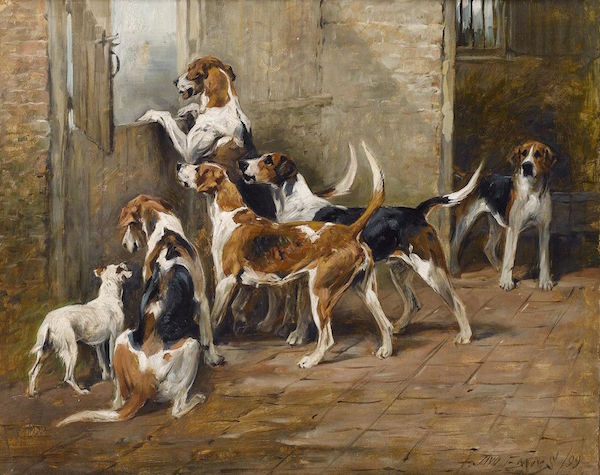
The English Foxhound has a curious passage in its breed standard when describing the back and loin: “Must both be very muscular, running into each other without any contraction between them. The couples must be wide, even to raggedness.”
Couples? Raggedness?
While it’s true that in the world of Foxhound hunts, dogs (which are always called “hounds”) are always counted as couples, (with one couple being two hounds), this isn’t the kind of “couples” to which the standard is referring. It is referring to the loin which should be broad and heavily muscled. Remember, now, this is a breed where hounds might run 70 miles in the course of a hunt. In fact, in England where longer hunts were held, it wasn’t uncommon for riders to change horses a couple of times, but the hound pack ran the whole time (and loved every minute of it).
A flat, level back is important for endurance, and the loins must be strong and broad in order to propel the dog at the end of the back. As for the word, “ragged,” it refers to the muscles around the loin area looking smooth, almost as if there was a ragged cloth under the skin.
The English Foxhound standard was written by and for huntsmen over 100 years ago, and the AKC standard has not changed since 1935. Indeed, having these amazing dogs is taken so seriously that a passage on the breed’s page on the AKC website reads, “Owning these noble creatures is best left to huntsmen who kennel packs of hounds or to those experienced in meeting the special challenges of life with swift, powerful hounds hardwired for the chase.”
We have a few English Foxhound friends for helping us better understand this topic: Ann Roth, Kevin Shupenia, Donna Smiley, Pam Constantine, and Katherine Gunter. Thank you all!
Image: “Waiting for the Hunt” by John Emms (1844-1912)

One thought on “Ragged Couples?”